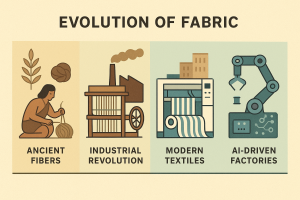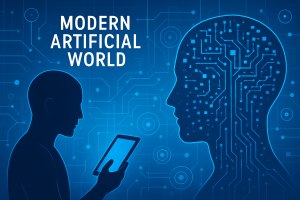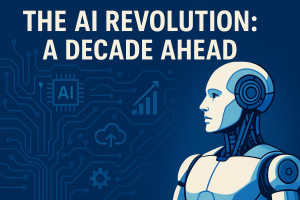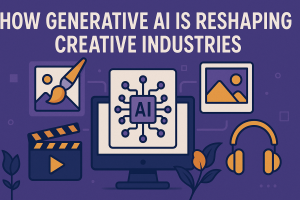Artificial Intelligence (AI) has become one of the most influential forces shaping our modern world, transforming industries, economies, and daily life. While the rapid progress of AI seems like a recent phenomenon, its intellectual foundations stretch back centuries. To understand how AI came to be, we must trace its roots from early mathematical thought in the Islamic Golden Age to the advanced machine learning systems of today.
Al-Khwarizmi: The Father of Algorithms
The story of AI begins in the 9th century, with Muhammad ibn Musa al-Khwarizmi, a Persian mathematician from present-day Uzbekistan, working under the Abbasid Caliphate in Baghdad.
Al-Khwarizmi’s pioneering work in mathematics, particularly in developing algebra and systematic problem-solving methods, introduced the world to the concept of step-by-step procedures—what we now call algorithms. In fact, the very word algorithm is derived from his name.
Although Al-Khwarizmi could not have imagined modern AI, his methods laid the intellectual groundwork for the structured problem-solving that powers computing and artificial intelligence today.
Early Theoretical Foundations (17th–19th Century)
AI as a concept evolved slowly through the works of philosophers and mathematicians who imagined mechanical reasoning.
- René Descartes (France, 1596–1650): Proposed that the body could be seen as a machine, inspiring future ideas of mechanized thought.
- Gottfried Wilhelm Leibniz (Germany, 1646–1716): Developed binary arithmetic, a crucial foundation for digital computing.
- George Boole (England, 1815–1864): Created Boolean logic, which remains essential to computer programming and machine reasoning.
- Ada Lovelace (England, 1815–1852): Envisioned that Charles Babbage’s Analytical Engine could go beyond numbers, potentially manipulating symbols and ideas—a precursor to AI thinking.
The Birth of Modern Computing and AI (20th Century)
The 20th century marked the true beginning of AI as a scientific discipline.
- Alan Turing (United Kingdom, 1912–1954): Proposed the idea of a “universal machine” capable of simulating any other machine. His 1950 paper introduced the Turing Test, a measure of machine intelligence.
- John von Neumann (Hungary/USA, 1903–1957): Developed the stored-program computer architecture that remains the basis of most computers today.
The actual term “Artificial Intelligence” was coined in 1956 at the Dartmouth Conference in the United States, led by John McCarthy (USA, 1927–2011), alongside Marvin Minsky (USA), Claude Shannon (USA), and Herbert Simon (USA). This event officially launched AI as a research field.
Key Developments in AI (1956–2000)
- 1950s–1970s: Symbolic AI dominated, with researchers attempting to encode human knowledge into rules.
- 1980s: The rise of expert systems, especially in the U.S. and Japan, applied AI in industries like medicine and finance.
- 1997: IBM’s Deep Blue, developed in the United States, defeated world chess champion Garry Kasparov, a major milestone in machine intelligence.
The Machine Learning Revolution (2000–2015)
AI shifted from rule-based systems to data-driven learning.
- Geoffrey Hinton (Canada), Yann LeCun (France), and Yoshua Bengio (Canada): Known as the “godfathers of deep learning,” they pioneered neural networks that power modern AI.
- Fei-Fei Li (China/USA): Created ImageNet, a massive dataset that accelerated breakthroughs in computer vision.
AI in the 2020s: The Age of Generative Models
By the 2020s, AI reached unprecedented levels of sophistication.
- OpenAI (USA): Developed large language models like GPT series, including GPT-4 and GPT-5, capable of human-like reasoning, writing, and problem-solving.
- DeepMind (UK): Created AlphaGo and AlphaFold, solving problems in strategy and biology.
- Anthropic (USA): Pioneered safety-focused large language models like Claude.
- Baidu, Tencent, and Alibaba (China): Pushed forward natural language processing and computer vision.
By 2024, AI was no longer just a research field but a transformative force shaping finance, healthcare, education, logistics, entertainment, and creative industries worldwide.
Conclusion
From Al-Khwarizmi’s algorithms in the 9th century to today’s generative AI models, the journey of Artificial Intelligence is a testament to human curiosity and ingenuity. It spans continents and centuries, shaped by mathematicians in Baghdad, philosophers in Europe, computer scientists in America, and innovators worldwide.
AI is not just a modern invention—it is the culmination of over a thousand years of human thought, steadily building toward machines that can learn, reason, and create.







Be First to Comment